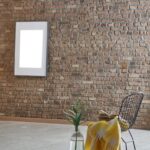Why do humans decorate their homes? The act of decorating living spaces is a universal phenomenon that spans across cultures and time periods. In this article, we will explore the deep-seated urge that drives humans to personalize and adorn their homes, as well as the various factors that influence these choices.
The practice of home decoration has evolved significantly from ancient to modern times, reflecting changes in societal values, technological advancements, and cultural influences. Throughout history, humans have used home decor as a means of self-expression, creating spaces that reflect their personal identity and aesthetic preferences.
Beyond personalization, there is also a psychological need for creating a sense of comfort and belonging within our living spaces. Research suggests that a well-decorated home can positively impact mental well-being, providing a sense of security and fulfillment.
Join us as we delve into the evolutionary, psychological, cultural, social, and scientific aspects of home decoration to gain a deeper understanding of this timeless human fascination with creating aesthetically pleasing and functional living environments.
The Evolution of Home Decoration
Home decoration has been a part of human culture for centuries, with evidence of ancient civilizations such as the Egyptians and Greeks adorning their living spaces with intricate designs and meaningful symbols. In ancient times, home decoration served not only as a way to beautify one’s surroundings but also as a way to express religious beliefs, social status, and personal preferences.
From wall paintings to intricate carvings, the evolution of home decoration reflects the changing lifestyles and priorities of different societies throughout history.
In ancient times, home decoration was often a labor-intensive process that required skilled artisans and craftsmen to create elaborate furnishings and decorative elements. The materials used for home decoration varied depending on the resources available in each region, leading to distinct styles and motifs that are still influential in modern design.
For example, the use of marble and stone in Greek architecture or intricate wood carvings in Chinese homes demonstrates the cultural significance of home decoration as a reflection of societal values and traditions.
As societies advanced and technology evolved, the methods and materials used for home decoration also changed. The industrial revolution brought mass production techniques that made decorative items more accessible to a wider population.
This led to a shift in home decoration trends towards more standardized designs and affordable options for furnishing and embellishing living spaces. In modern times, the availability of a wide range of decor styles from different cultures around the world has created a melting pot of influences that contribute to diverse and eclectic interior design choices.
The Psychological Need for Personalization and Self-Expression
Humans have a deep-seated psychological need for personalization and self-expression, which often extends to their living spaces. The act of decorating a home allows individuals to express their personality, values, and interests through the arrangement of furniture, choice of color schemes, and display of meaningful objects. This need for personalization can be traced back to our innate desire for autonomy and control over our environment.
Moreover, research in psychology has shown that the act of personalizing one’s living space can have a significant impact on mental well-being. A study published in the Journal of Environmental Psychology found that individuals who felt a sense of control over their environment reported higher levels of satisfaction and lower levels of stress. This supports the idea that decorating one’s home can provide a sense of empowerment and comfort in an otherwise chaotic world.
Furthermore, self-expression through home decoration can also serve as a form of identity assertion. By surrounding themselves with objects that reflect their values and beliefs, individuals are able to create a tangible representation of who they are. This can be particularly meaningful in today’s interconnected world, where many people seek to establish a unique identity in the face of societal pressures and expectations.
| Psychological Aspect | Effects |
|---|---|
| Personalization and Self-Expression | Allows individuals to express personality, values, and interests |
| Mental Well-Being | Research shows that personalizing living space can lead to higher satisfaction and lower stress levels. |
| Identity Assertion | Serving as a form of establishing unique identity amidst societal pressures. |
Cultural Influences on Home Decoration
Home decoration is not just about personal taste and style; it is also influenced by the culture and traditions of different societies. The way people decorate their homes is often a reflection of their cultural background, beliefs, and values. For example, in some cultures, specific colors may hold spiritual significance or certain patterns may symbolize good fortune. Understanding these cultural influences can provide valuable insight into the diverse ways in which people approach design and aesthetics.
In many Eastern cultures, such as in China and Japan, minimalism and simplicity are highly valued in home decoration. Clean lines, natural materials, and an uncluttered space are common elements seen in traditional Eastern interior design. This reflects the influence of philosophies such as Zen Buddhism, which prioritize tranquility and harmony.
On the other hand, Western cultures often embrace a more eclectic approach to home decoration, incorporating a mix of styles, patterns, and decorative elements. This reflects the Western emphasis on individualism and self-expression.
It’s important to recognize that cultural influences on home decoration are not static but are constantly evolving. Globalization has led to an exchange of ideas and styles across different cultures, resulting in a blending of traditional and contemporary design elements. As a result, modern home decoration often reflects a fusion of cultural influences from around the world.
| Cultural Aspect | Examples |
|---|---|
| Minimalism in Eastern Cultures | China & Japan |
| Eclectic Approach in Western Cultures | United States & Europe |
| Fusion of Cultural Influences | Globalization Impact |
The Science Behind the Positive Effects of a Well-Decorated Home on Mental Well-Being
Creating a Calming Environment
One of the most significant benefits of a well-decorated home is the positive impact it can have on mental well-being. Certain design elements, such as soothing color palettes, natural lighting, and comfortable furniture, can contribute to creating a calming environment.
Research has shown that being in a space with these features can reduce stress levels and promote relaxation. By consciously incorporating such elements into our home decor, we are able to create an environment that supports our mental health.
Enhancing Mood and Emotions
The use of design elements like artwork, decorative textiles, and personal mementos can also enhance mood and emotions within a living space. These items can evoke positive memories, spark joy, or simply serve as aesthetically pleasing reminders of what brings happiness into our lives.
Studies have suggested a link between the presence of meaningful objects in one’s home and overall life satisfaction. Furthermore, the arrangement and placement of these items play a role in how they affect individuals’ emotional states on a daily basis.
Promoting Productivity and Creativity
A well-decorated home can also support productivity and creativity. Factors like organization, comfortable workspaces, and visual stimulation through intentional decor choices can all contribute to this effect. When individuals feel inspired by their surroundings, they are more likely to engage in creative activities or maintain focus on tasks at hand.
Additionally, the ability to personalize one’s living space allows for self-expression which can further foster a sense of purpose and motivation. Recognizing these psychological benefits encourages individuals to approach interior design as an investment in their mental well-being.
By understanding how various design aspects impact mental well-being, people are increasingly recognizing the importance of thoughtfully decorating their living spaces for enhanced overall health and happiness.
The Role of Interior Design in Creating Functional and Aesthetic Spaces
Functionality and Efficiency
Interior design plays a crucial role in creating functional and efficient living spaces. The arrangement of furniture, the use of space, and the incorporation of storage solutions are all aspects that impact the practicality of a home.
For example, a well-designed kitchen layout can make cooking and meal preparation more convenient, while an organized bedroom can contribute to better quality sleep. Interior designers take into account the needs and habits of the dwellers to create spaces that promote efficiency and functionality.
Aesthetics and Visual Appeal
In addition to functionality, interior design also focuses on the aesthetic aspects of a home. The selection of colors, textures, patterns, and decorative elements all contribute to the visual appeal of a space. Aesthetic considerations not only enhance the beauty of a room but also contribute to creating a harmonious and pleasant environment. Furthermore, the aesthetic qualities of a space can have an impact on the inhabitants’ mood and well-being.
Balancing Form and Function
A key principle in interior design is finding the balance between form and function. This means that while creating an aesthetically pleasing space is important, it should not come at the expense of practicality. Interior designers work to ensure that their creations are both visually appealing and fully functional. They consider factors such as traffic flow, lighting, ventilation, and ergonomics to achieve this balance.
Overall, interior design is essential in creating living spaces that are not only attractive but also practical and efficient for their inhabitants’ daily activities. By paying attention to both functionality and aesthetics, interior designers play a crucial role in shaping environments that cater to the needs and preferences of those who live in them.
The Social Aspect of Home Decoration
It is no secret that humans are social beings, and our desire to impress others and create a welcoming environment extends to our homes as well. The way we decorate our living spaces often reflects our desire to make a positive impression on friends, family, and guests who visit our homes. This social aspect of home decoration can be seen in various design choices and the overall ambiance we aim to create.
Some ways in which the social aspect becomes evident in home decoration include:
- Choice of furniture and decor: Many people consciously select furniture and decor items that they believe will leave a lasting impression on others. Whether it’s a stylish statement piece or unique artwork, these choices often reflect an individual’s desire to showcase their taste and personality to visitors.
- Hosting events and gatherings: For those who enjoy entertaining guests, the way their homes are decorated becomes even more crucial. Creating a welcoming environment by choosing the right lighting, seating arrangements, and decorative elements can significantly impact the overall experience for attendees.
- Keeping up with trends: In some cases, individuals may feel pressured to keep up with current design trends in order to impress others. Whether it’s following popular color schemes or incorporating trendy decor items, the desire to stay relevant within social circles can heavily influence home decoration choices.
Overall, the social aspect of home decoration goes beyond personal satisfaction and extends into creating spaces that are not only aesthetically pleasing but also serve as extensions of one’s personality and social interactions.
How Trends and Fashion Influence Home Decoration Choices
Individuals are often influenced by the ever-changing trends and fashion in their choices for home decoration. Whether it’s the color scheme, furniture styles, or decorative accents, people tend to look towards current trends and fashion for inspiration when designing their living spaces. Home decor magazines, television shows, and social media platforms play a significant role in shaping these trends and influencing personal preferences.
Trends and fashion in home decoration are not static; they constantly evolve and adapt to societal changes, technological advancements, and cultural shifts. For example, eco-friendly and sustainable design has become a prominent trend in recent years as more people prioritize environmental conservation in their lifestyle choices. Similarly, minimalist and Scandinavian-inspired aesthetics have gained popularity due to their clean lines, simplicity, and emphasis on functionality.
In addition to following current trends, many individuals also use fashion as a way to express their personal style through home decoration. Just as one’s clothing can be a form of self-expression, the design choices within a home can reflect an individual’s personality, interests, and values. Whether it’s through unique artwork, vintage furniture pieces, or bold color palettes, incorporating elements of personal style adds individuality to a living space while staying attuned to current trends.
Conclusion
In conclusion, the act of decorating our homes is a multifaceted and deeply ingrained human behavior that has evolved over time. From ancient civilizations to modern societies, humans have felt the need to personalize and express themselves through their living spaces. This psychological need for self-expression transcends cultural boundaries, with different societies approaching design in varying ways, influenced by their unique traditions and beliefs.
Furthermore, the positive effects of a well-decorated home on mental well-being have been backed by scientific research. Aesthetically pleasing and functional spaces can have a profound impact on our mood, productivity, and overall quality of life. Interior design plays a crucial role in creating these spaces, combining both functionality and aesthetic appeal to meet the needs of individuals and families.
It is also important to consider the social aspect of home decoration. Creating a welcoming environment for oneself and others, as well as impressing visitors, plays a significant role in our desire to decorate our homes. Additionally, the influence of trends and fashion cannot be overlooked when it comes to home decoration choices. Understanding these various factors helps us comprehend the deep-seated fascination with decorating our living spaces that has persisted throughout human history.
Frequently Asked Questions
Why Do People Like to Decorate Their House?
People like to decorate their house because it allows them to express their personal style and create a space that reflects their personality. By decorating, individuals can also make their home more inviting and comfortable for themselves and their guests. Furthermore, it can be a way for people to showcase their creativity and take pride in their living space.
Why Do Humans Decorate Things?
Humans decorate things as a way to add beauty, meaning, and personality to the world around them. Whether it’s decorating a room, an object, or themselves, decoration is a means of self-expression and creativity. It provides individuals with the opportunity to personalize and enhance their surroundings according to their own preferences and taste.
What Is the Aim of Home Decoration?
The aim of home decoration is to create an environment that is visually pleasing, functional, and comfortable for the people living in it. Beyond aesthetics, home decoration also serves practical purposes such as making a space feel cohesive, organized, and reflective of the inhabitants’ lifestyle and values.
Ultimately, home decoration aims to transform a house into a home that reflects the identity of its residents.

I’m thrilled to be your companion on this exciting journey through the world of home decor and design. With a passion for turning houses into homes and a keen eye for the finer details, I’m here to help you transform your living spaces into beautiful, functional, and meaningful havens.





